Baked Potatoes
This post may contain affiliate links. Read my full disclosure policy.
Crispy and salty on the outside and fluffy in the middle, these are perfect baked potatoes.
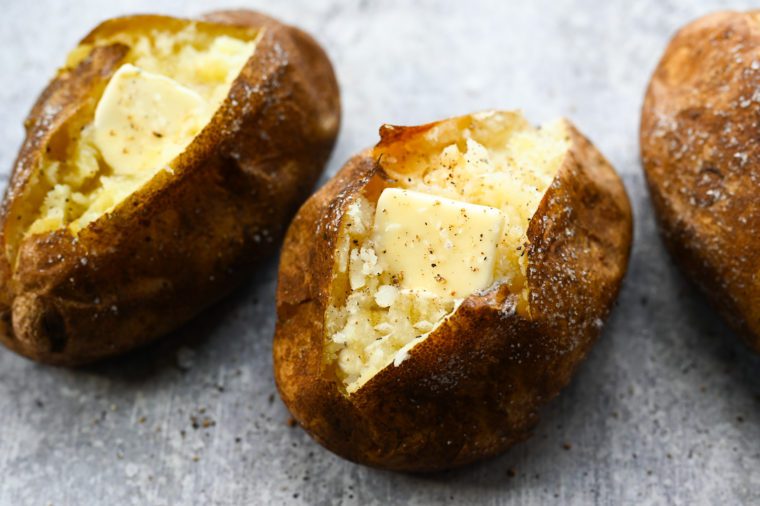
Crispy on the outside, soft and fluffy on the inside — that’s the hallmark of the perfect baked potato. When slit open, its steaming interior becomes the ultimate base for decadent toppings, from classic butter and sour cream to ranch dressing to crumbled bacon. While baking potatoes is largely hands-off, there are endless opinions on the best way to go about it. My approach is simple. I don’t wrap them in foil or lay them on a bed of salt. And I certainly don’t pre-cook them in the microwave. A generous rub of oil, a sprinkle of salt, and an hour in a 400°F-oven does the trick. No fuss, no muss, and you get baked potatoes that are flawlessly tender on the inside with a beautifully crispy, seasoned skin.
In the mood for sweet potatoes instead? My baked sweet potatoes recipe use a similar method, but with a higher temperature to bring out their natural caramelized sweetness.
What You’ll Need To Make Baked Potatoes
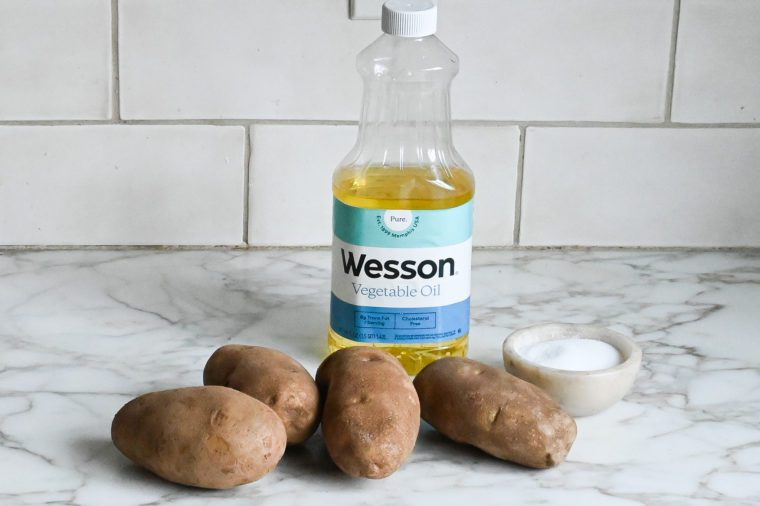
- Russet potatoes – Also known as Idaho potatoes, russet are ideal for making baked potatoes. They are large with a long oval shape and brown skin. Their flesh is starchy, so they become fluffy and flaky when cooked. In addition to baked potatoes, they’re ideal for making mashed potatoes, french fries, and potato latkes. Prior to cooking, the potatoes should be scrubbed clean of any dirt, rinsed, and dried.
- Salt – Enhances the natural flavor of the potatoes and adds a deliciously seasoned, crispy skin.
- Oil – Coats the potatoes to create that perfect golden, crispy exterior. I use vegetable oil but you can use olive oil if you prefer.
- Jump to the printable recipe for precise measurements
Should You Wrap Potatoes in Foil?
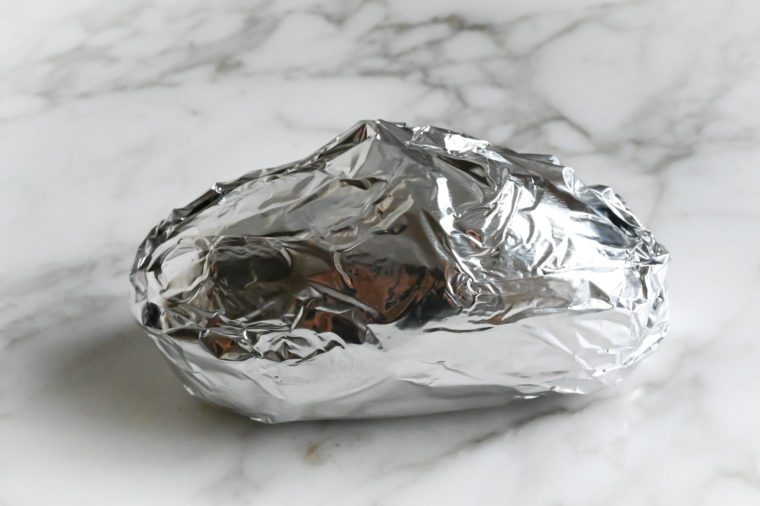
Nope. Wrapping the potatoes in foil helps retain moisture, which results in steamed rather than baked potatoes. The interior of a foil-wrapped baked potato is wetter and less fluffy, and the skin isn’t crispy. Wrapping adds an extra step and results in inferior baked potatoes, especially if you enjoy eating the crispy skin, so don’t do it!
To Prick or Not To Prick?
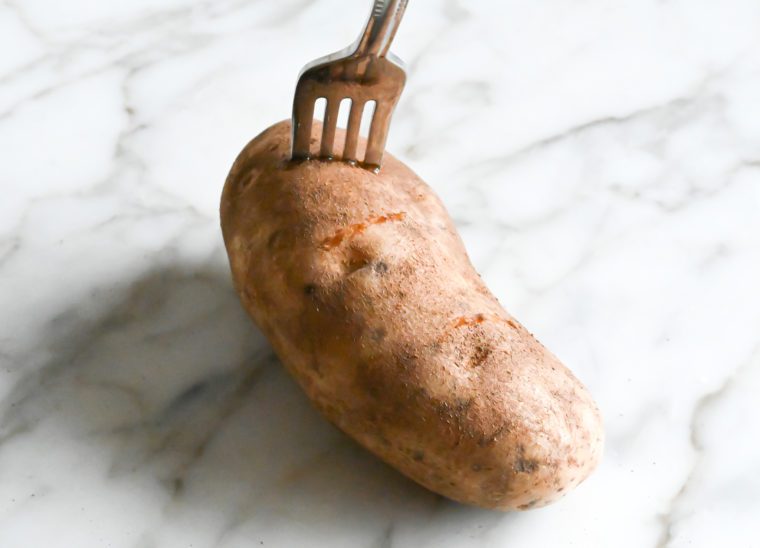
It’s up to you. Pricking potatoes with a fork prior to cooking supposedly prevents steam from building up inside them as they bake, which can make them explode in the oven. However, this theory is highly debatable. I don’t prick my potatoes, and in all my years of cooking, I have never had one explode in the oven. Most people prick their potatoes because that’s what their mothers did. If you want to prick, there’s no harm in it; it just adds an extra step.
How To Bake A Potato
Preheat the oven to 400°F and set an oven rack in the middle position. Line a baking sheet with aluminum foil. Directly on the baking sheet, rub the potatoes with the oil and sprinkle all over with the salt.
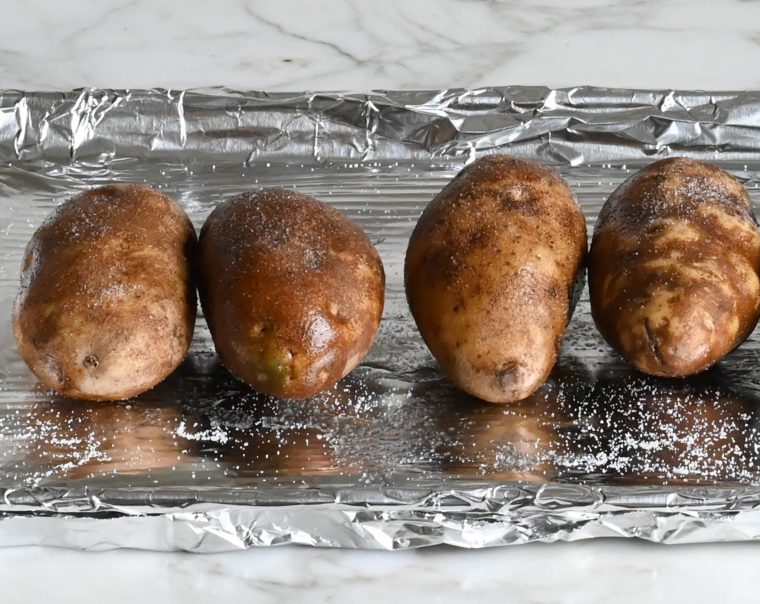
Bake until tender when pierced in the center with a sharp knife (or until the center of the largest potato registers 205°F to 210°F), 60 to 70 minutes. You can also squeeze the potatoes to see if they are soft (be careful; they’re hot!).
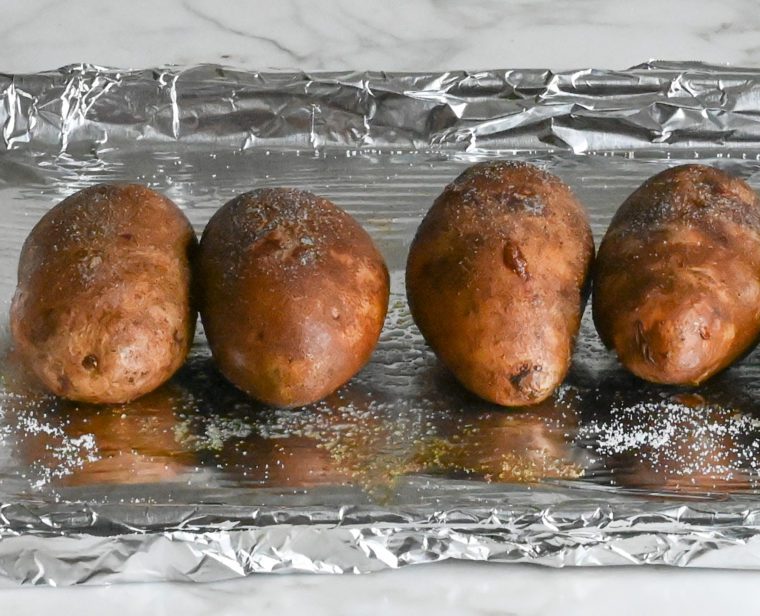
Let the potatoes sit for a few minutes until cool enough to handle. Cut a slit down the center of each potato and serve with toppings of choice.
Baked Potato Toppings
Now that you know how to make the perfect baked potato, try topping it with:
- Butter
- Sour cream
- Bacon
- Chives or scallions
- Roasted broccoli, cauliflower, or Brussels sprouts
- Shredded cheese, like Monterey Jack, cheddar, blue cheese crumbles, Parmesan, or Gruyere
- Beef chili or turkey chili
- Taco filling

You May Also Like
Baked Potatoes
Crispy and salty on the outside and fluffy in the middle, these are perfect baked potatoes.
Ingredients
- 4 large russet potatoes, scrubbed clean of dirt, rinsed and dried
- 2 teaspoons vegetable or olive oil
- ½ teaspoon salt
Instructions
- Preheat the oven to 400°F and set an oven rack in the middle position. Line a baking sheet with aluminum foil.
- Prick each potato a few times all over with a fork, if you like (see note). Directly on the baking sheet, rub the potatoes with the oil and sprinkle all over with the salt. Bake until tender when pierced in the center with a sharp knife (or until the center of the largest potato registers 205°F to 210°F), 60 to 70 minutes. You can also squeeze the potatoes to see if they are soft (be careful; they're hot!). Let sit for a few minutes until cool enough to handle, then cut a slit down the center of each potato and serve with toppings of choice.
- Note: Conventional wisdom says that prior to baking, you have to prick potatoes with a fork a few times to allow steam to escape during baking. The theory is that if you don’t prick the potato, the steam can build up under the skin and cause the potato to explode in the oven. I don't prick my potatoes and have never had a potato explosion, but pricking won't harm the potatoes, so go ahead and prick them as insurance, if you like.
Nutrition Information
Powered by ![]()
- Per serving (4 servings)
- Serving size: 1 potato
- Calories: 313
- Fat: 3 g
- Saturated fat: 0 g
- Carbohydrates: 67 g
- Sugar: 2 g
- Fiber: 5 g
- Protein: 8 g
- Sodium: 309 mg
- Cholesterol: 0 mg
This website is written and produced for informational purposes only. I am not a certified nutritionist and the nutritional data on this site has not been evaluated or approved by a nutritionist or the Food and Drug Administration. Nutritional information is offered as a courtesy and should not be construed as a guarantee. The data is calculated through an online nutritional calculator, Edamam.com. Although I do my best to provide accurate nutritional information, these figures should be considered estimates only. Varying factors such as product types or brands purchased, natural fluctuations in fresh produce, and the way ingredients are processed change the effective nutritional information in any given recipe. Furthermore, different online calculators provide different results depending on their own nutrition fact sources and algorithms. To obtain the most accurate nutritional information in a given recipe, you should calculate the nutritional information with the actual ingredients used in your recipe, using your preferred nutrition calculator.
Gluten-Free Adaptable Note
To the best of my knowledge, all of the ingredients used in this recipe are gluten-free or widely available in gluten-free versions. There is hidden gluten in many foods; if you're following a gluten-free diet or cooking for someone with gluten allergies, always read the labels of your ingredients to verify that they are gluten-free.

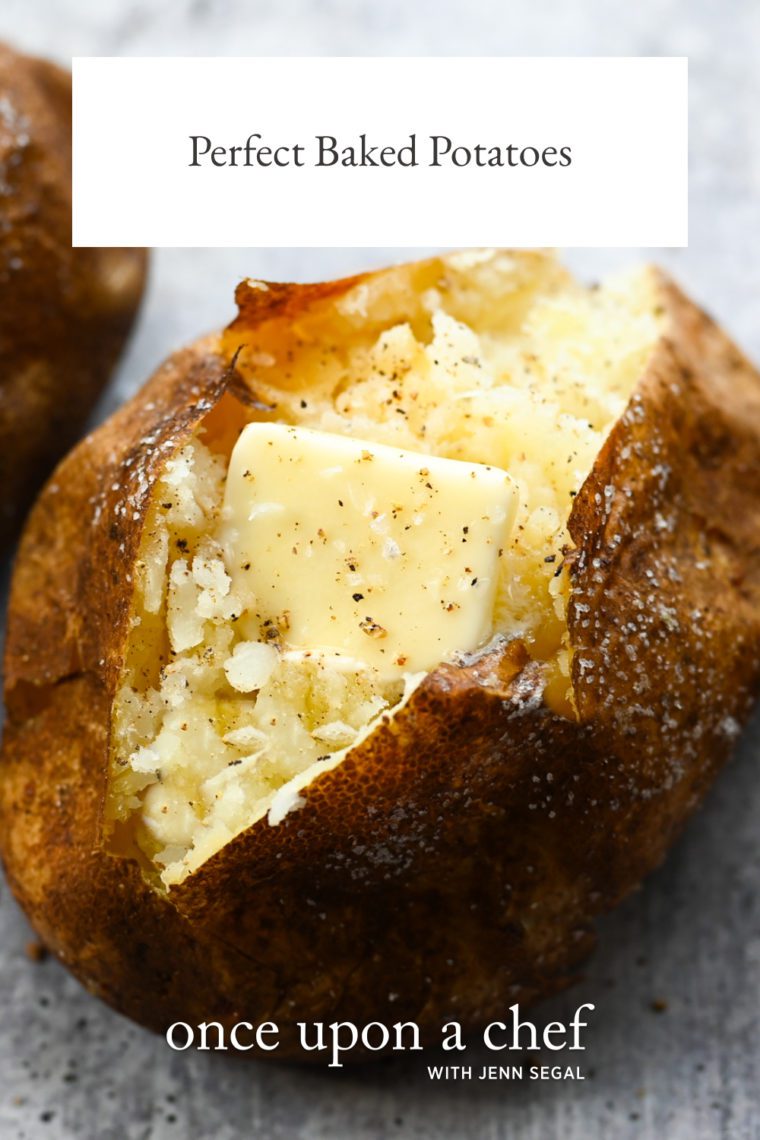
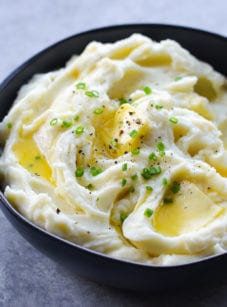
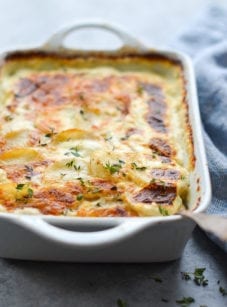
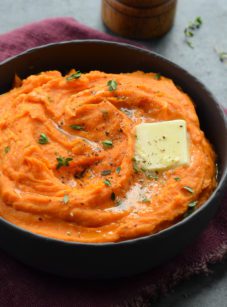
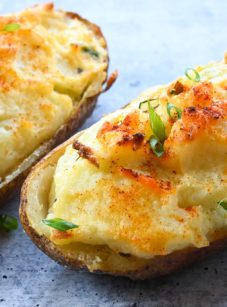
Jenn……I just posted a comment and have second thoughts about it. If someone leaves an uneaten hot potato in the foil, “the moisture can create a perfect haven, if bacteria is present, to reproduce when the baked potato cools down while wrapped in foil and hits a temperature of 135 F to 41 F. This temperature range is considered the danger zone. ”
I apologize for not thinking this through before sending in my previous comment! Probably not everyone is aware of this precaution…eat the potatoes while they are hot…unwrap any left-over potatoes!